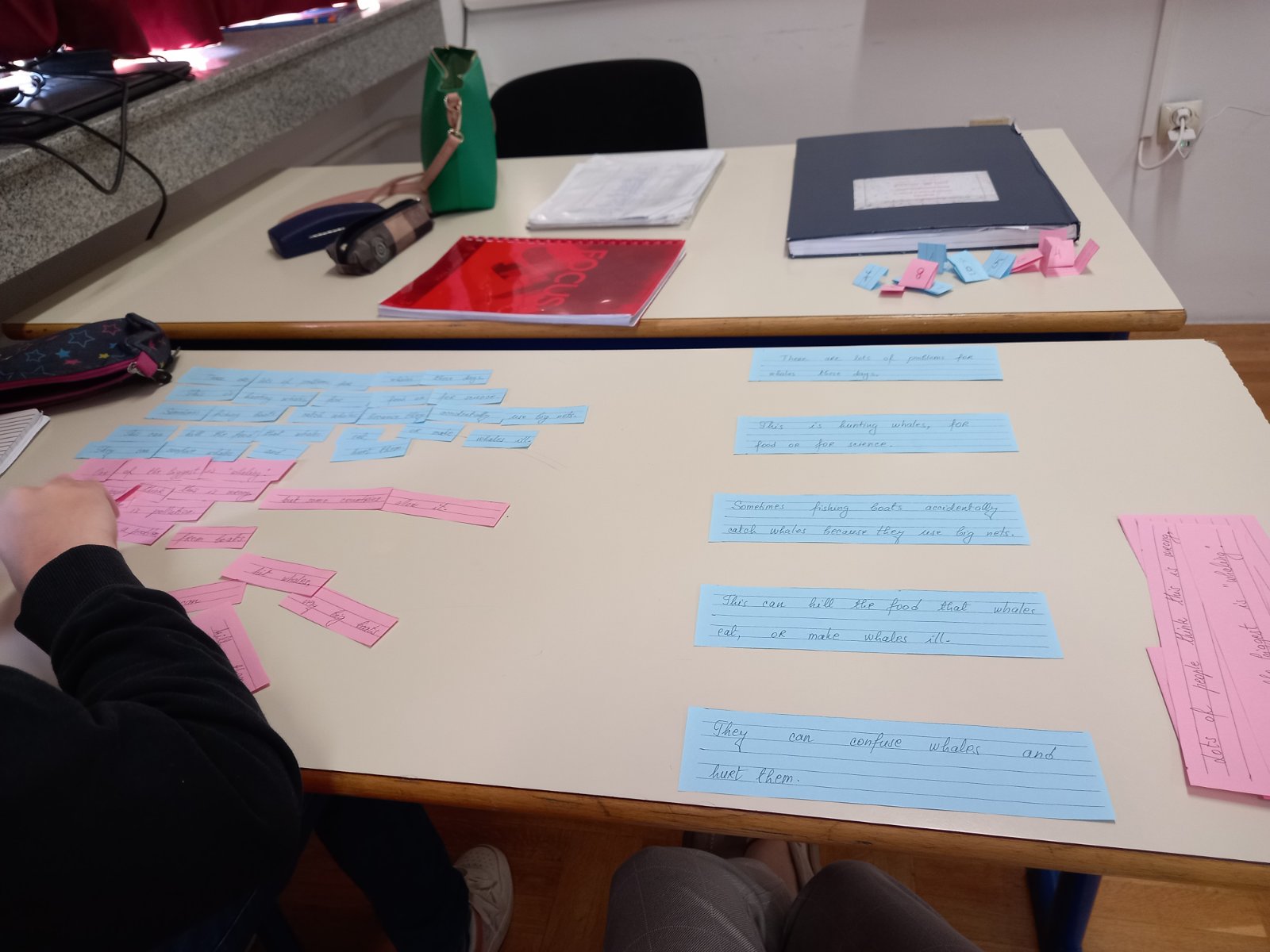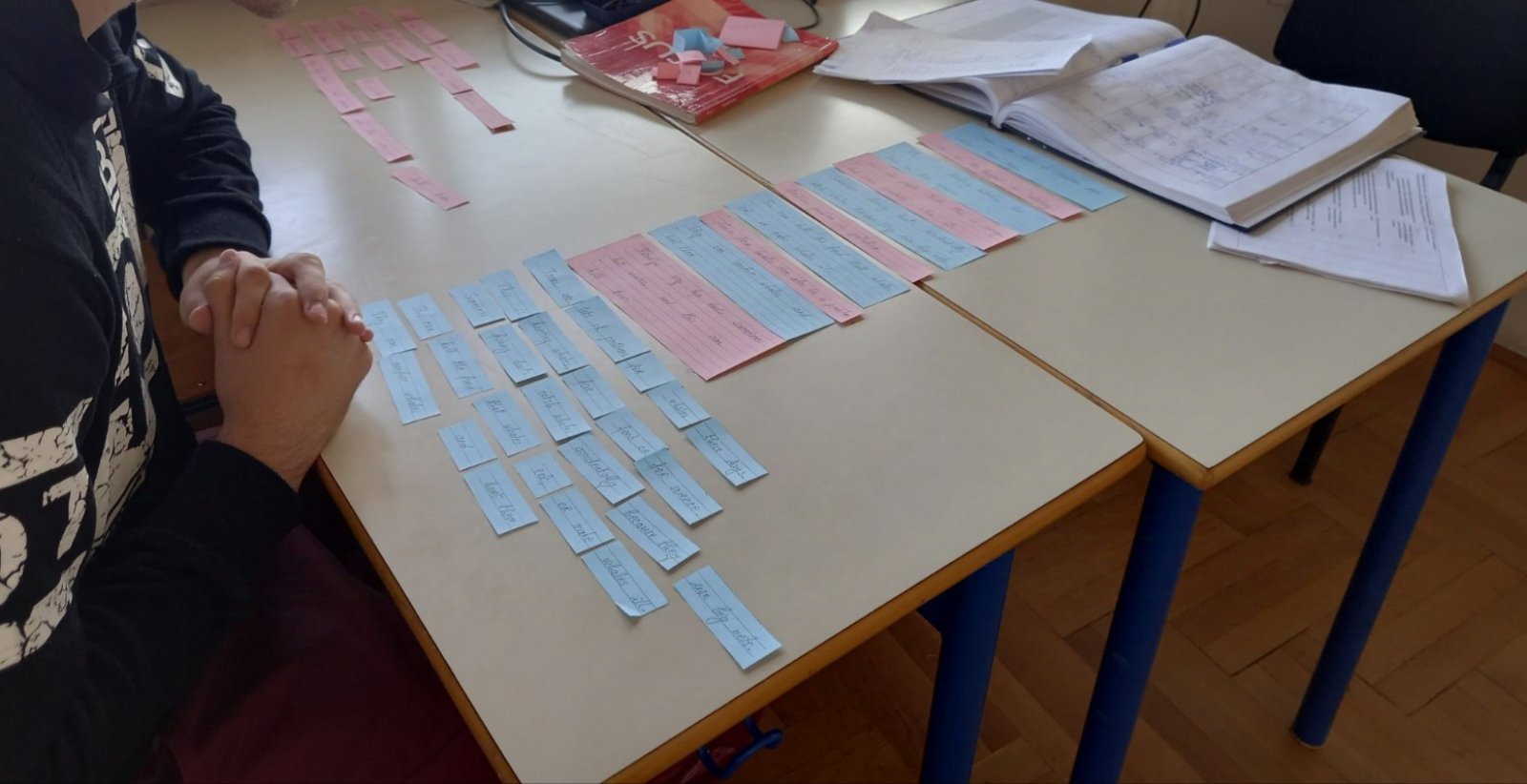From the material which was shared with the participants during the study visit to Helsinki in June 2024, the activity PLAIN LANGUAGE was piloted with SEN (Special Educational Needs) students as a try out for future teaching practice. The concept of plain language was applied to simplify the grammar rules for basic English tenses by using descriptive grammar resources with SEN students: tenses were presented to them in forms of time lines and drawings for easier understanding of the tense formation and use. Later on, the students had a task to write a short story by using the grammar structures and familiar vocabulary on the topic of protection of the environment and endangered species. So the students connected words and phrases in order to form the sentences, then they compared their answers with the answer key. Afterwards, students ordered the correct sentences so that the story is made/written. Additional activities were: students read, translated, copied, wrote a similar story by changing one detail in each sentence.





